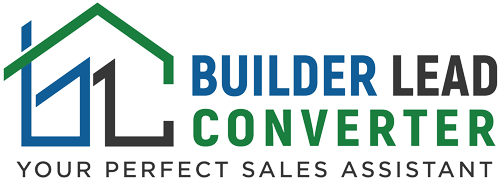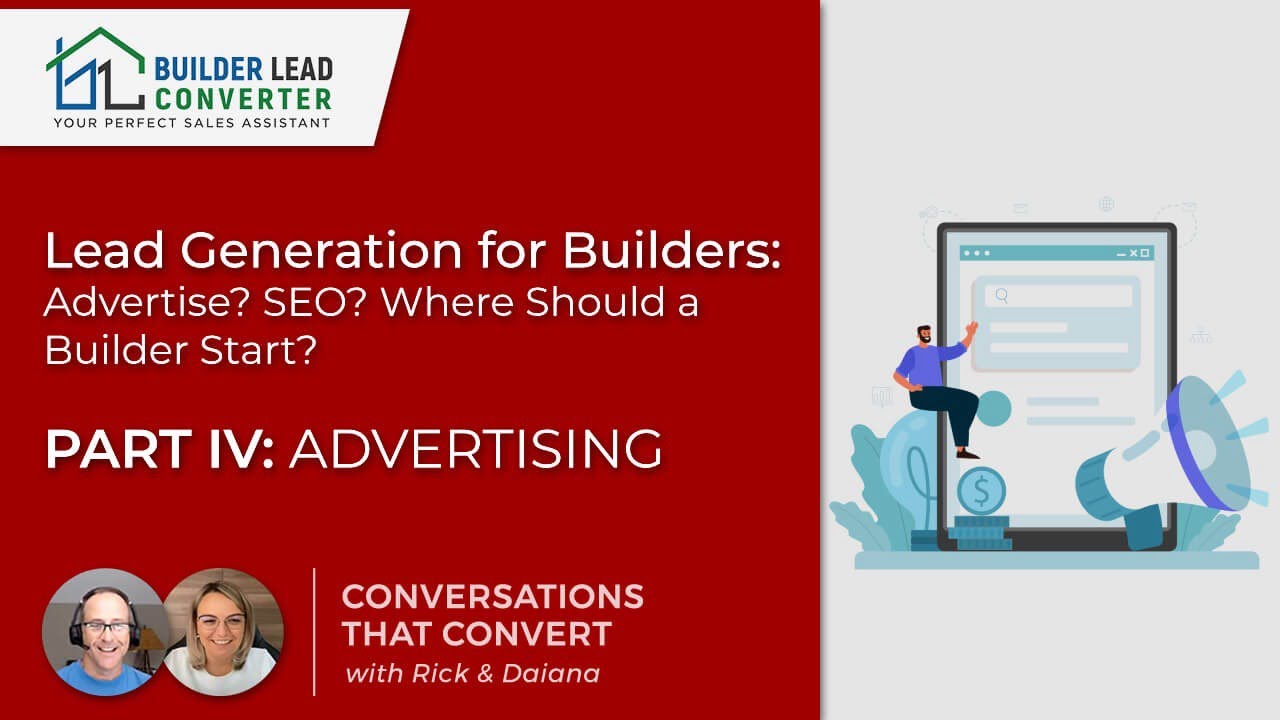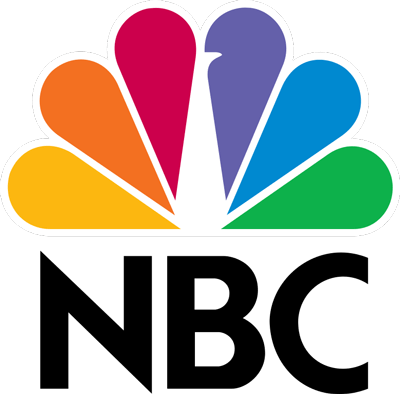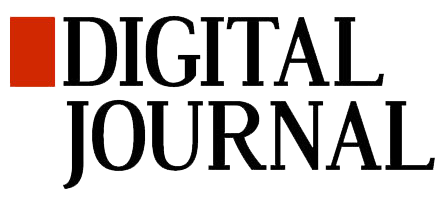Question: Should builders start using paid ads to find new leads? This question is getting asked a lot as the market starts to tighten up.
In this second episode of the five-part series “Lead Generation for Builders”, we explore the types of ads to avoid, the best practices builders need to implement for online and offline ads, and proven ways to drive conversions by maximizing advertising tactics.
To make a focused and impactful ad campaign, it’s essential to know who you should be targeting and on what channels, like anything else in business, focus is the key! So, watch/listen/read this episode and get started digging into the best strategies for effective lead generation through advertising…
Builder Lead Converter ATTRACTS, CAPTURES & CONVERTS high-quality leads for builders so they can pick & choose their clients & jobs. Find out how at https://www.builderleadconverter.com
Transcript:
Rick: Today on Conversations That Convert, we’re going to be talking about part two or episode two of our episode called Lead Generation for Builders, Paid Advertising, and these are all the things that you should do before you start paid ads. And then once you start paid ads, we’ll talk about some things that you must do in order to determine if you’re getting a return on investment.
Welcome to Conversations That Convert every week, we’ll spend about 10 to 15 minutes tackling relevant lead generation, marketing, and sales topics for remodelers home improvement companies, and home builders, Conversations That Convert is brought to you by Builder Lead Converter, your perfect sales assistant. And now here’s Rick and Daiana.
Rick: Welcome everyone to Conversations That Convert, welcome Daiana. You’re looking lovely today.
Daiana: Thank you.
Rick: So what’s our topic today, Daiana?
Daiana: Today, episode two of part four, paid advertising. And this is from serious lead generations for builders.
Rick: That’s right. Yeah, we’re continuing on in our serious lead generation for builders. And while I’ve been getting a lot of calls and conversations about lead generation right now. The market has changed. It’s slowing. So this is something that a lot of builders look to to say, Hey, I need to sort of fill my pipeline again. Should I start advertising is the question. Well, we’re going to try to answer that question for you today. And this series is all based on the Association of Professional Builders Annual State of the Residential Construction Industry Survey. The number one marketing challenge for custom builders and remodelers was generating qualified leads or high-quality leads.
In other words, yeah, you can generate leads, but a lot of them are not real high quality and a lot of them don’t convert. So the question is, therefore, how should I be trying to put high-quality leads into my pipeline? That’s what we’re trying to answer here today. So this is a short recap. We started this series by setting up your roadmap, and sort of putting together a plan for actually optimizing your client acquisition funnel. Then we talked about, number one, plugging your opportunity leaks. Then we went into search engine optimization and our friend, Jens Rhodes from search floodlight SEO came on and told us all about what builders should be looking at when they are considering or utilizing search engine optimization.
And then we came back today to me and Daiana talking about digital and offline paid ads. So episode one of this is where we talked about some of the pitfalls and the common mistakes builders make. In case you’re advertising right now or considering it. So now this episode, we’re going to move into and talk about best practices. So what do you think, Daiana? Any thoughts here before we jump in?
Daiana: I’m excited. That’s a long series of four parts. So…
Rick: Four parts. Yeah. And we got one more, we do an after this, which is really just a recap, trying to summarize everything for you in one episode. So best practices for online ads. And this is normally where builders go to first. And it, in other words, a lot of builders that moved away from print a long time ago. Print is also still very expensive. And so they say, Hey, let’s should I go on Facebook or Google or where, where should I start online is usually the place. So let’s talk about again some of these best practices.
Number one, you want to test everything, and what that means is you want to test the ad, you want to test landing pages, and by landing page, I mean, when you put an ad together. It’s going to have an offer in it and that offer when you click on it will go to what we call a landing page. Now that landing page is designed to get that lead to opt in. So an opportunity starts on the landing page, hopefully when they leave their lead. So we’re gonna ask something like their first name, last name, maybe an email, cell phone number and you can go from there. So there’ll be an offer on the ad, a compelling reason to click. Once they get to the landing page, there should be a second offer.
So we want to make sure we’re measuring everything. And by that, I mean split testing. So that’s a term that’s used in the industry. Split testing is where you create one ad set and you can create two different landing pages. They call it an AB split test. So landing page number one, maybe has a little bit of different messaging, maybe different images. It could be a video on that one. And then landing page number two is going to be a variation of that. So you’re able to drop traffic on both of those landing pages and then you can test which one works better. And obviously, the one that produces more is the winner. And then you get rid of the one that’s the underperforming one and just focus on that until the ad doesn’t work anymore. So yeah, test everything.
Different photos are really important, too. Should you use a photo of your product? Should you use maybe a lifestyle photo? Should you use a photo of your team? Test it, you know, see which one performs better. Change the text around, and maybe test video versus not video. That’s what I like to do on split tests, which is maybe have one page with a video and one page with an image. And then the next thing we want to look at is measuring ad clicks and conversion. So the ad clicks are very easy. That’s just how many people see your ads. So you’re gonna get an impression, which is where the ad goes through somebody’s feed.
So like if it’s a Google search or if it’s a Facebook feed or Instagram feed, that’ll be an impression. And then if they click on it, that’s a click-through. And then we look at how many people come to the landing page. And then we’re going to look at how many people actually converted into an appointment. And then from there, you put them into your sales pipeline and you have them tagged. They came from this particular lead source, this particular ad campaign, and you can see if that ultimately converted into a sale for you. So paid ads, one thing they can be good for is if you don’t have a database right now.
To start building up that database because a lot of times these leads are low quality, they don’t respond. So as long as you put them into the database and then you keep responding to them over time, like say a long-term nurturing program, some sort of a, you know, indoctrination program and an ascension program, which are different levels of a, of a nurturing program. Yeah, over time they can come around and they might become a lead, but you want to have all that set up, of course, first before you start run- running the ads. Now I’m gonna take a pause here and just a breath. Daiana, any feedback or thoughts you know on anything we’ve discussed so far?
Daina: I took a note so it’s very clear. If you follow this process, then I think you’ll be successful. So just test everything, text, video, photos, then conversions, add clicks, then move to a landing page, and then move to an appointment, and then nurture the lead. until it becomes a client. And the database is the most important one.
Rick: Yep. Now, the opposite of that, I should say in other option is you run an ad and you just drop people on your website.
Daiana: Yeah.
Rick: You know, so I’m just going to generate more web traffic. And I do have, I do have a client doing that. They’re spending 5000 a month on ads and just dumping people on their website. Now we have optimized their website for lead capture, but their conversion rates are way low. I mean like way low, like less than 1%, but their web traffic is very, very high. So again, like 5,000, I think it’s almost 5,000 unique site visitors each month. I mean, it’s just a ton of traffic, but very low conversions. But when you look at it, it’s still 100 plus leads a month that they’re getting. So they are getting business out of it, but it’s a very inefficient way to do things.
So I always recommend a landing page because then you’re truly testing and you can do the split test. If you go to a website, much more difficult to track. You will get traffic. You will get some leads from that way, but you just don’t know if they’re finding you organically through the paid ads. And that’s, that’s where the rub is. So do use retargeting ads for organic website traffic. So you can take and put a code on your website, like say from Facebook or Instagram. And so if you run an ad on Facebook and someone clicks on it and they come to your website, but they don’t opt in. That code will track that person and then you can actually create what’s called a retargeting ad.
You can give a different ad for people that have come to your website, but never opted in and so you can give them a different offer call to action on an ad and on Facebook or Instagram that only they will see, now retargeting ads are pretty good because the people have already, you know, looked at your website once you get a little bit higher conversion rate with those. Do use your databases to build custom audiences and look-alike audiences on Facebook. So if you have a database of 2500 people right now. You can upload that database into Facebook and then any of those people that use the same email address and or phone number for their Facebook profile, it will create what’s called a custom audience.
And so, that audience now you can start running ads too. So these are people that already know you. You can do the same thing for people that have liked your Facebook page. You can do an audience there. Now, if you have enough of those people, a big enough list, then you can create what’s called a lookalike audience. So that lookalike audience is again, what Facebook does is they say, okay. What is another person on Facebook that looks like the people that are in your database and then they’ll create that for you can run ads to them? You don’t have very success doing that as well, but it’s another thing to try the challenge, of course, with home building, not necessarily remodeling, but it is a protective class.
So, in other words, you cannot put in demographics when you’re setting up your Facebook or Instagram ads, you can only say, I wanted to send out to a radius around this area, so you pick a radius and then you have no control over it from there because it’s a protected class. So that’s the challenging part with it is you really can’t dial in the demographics, even the psychographics, that sort of thing. If you control lots in a neighborhood, now you could try geofencing as well, geofencing ads. So geofencing is something where it’s almost like the Google Ads network, where there are certain apps on people’s phones. Where you can actually buy a geofencing advertising.
So let’s just say I have the Weather Channel app on my phone. Let’s just say I’m walking into a store like say Costco and Costco is running the geo fence that if I happen to have the weather app open on my phone, that Costco ad will show up. So now this is the example. You have a neighborhood where you control some land. You can run a geofence ad, so if your potential lead is driving by that neighborhood and they have an app open on their phone that will run geofencing ads, boom, your ad can pop up. They can say, hey, you know, new homes in this community from so and so. So again, it’s a bit of a shotgun approach, you know.
Again, I’ve tried it before, but haven’t had real good success with it. But it is out there, you know, if you want to try it and geofencing doesn’t cost a whole lot of money. Now, inbound lead magnet conversions will tell you the types of offers you use in ads. In other words, those lead magnets you have on your website, understanding what people are opting into from an organic standpoint. In other words, they’re searching for something that goes to your website and then they opt in. So example, like we get a lot of options from design and pricing is number two. So those will tell you that’s a type of information that you should use to build an ad for paid because what appealed to your inbound marketing will also appeal to you when you’re going outbound for paid ads.
And then the last thing that I recommend, I do recommend that you know, you’ve heard this back and forth, like, when should I be spending money on ads? In other words, should I advertise when it’s slow and nobody else is really advertising because then I’ve got more of should I wait? And hold my ad budget to when it’s typically a busier time of year, like say a spring market you know, January through May is usually that peak market where you’re getting the most of your, your leads during that time. I do recommend that that’s where you put most of your budget in this January through May. And then I usually back off in the summer.
I’ll kick it back up a little bit, September, October, and then November, and December, I’m going to pull back on my ad budget. So I don’t recommend advertising when the market is slow. For the reason is, is because, you know what, keep your powder dry. For where there are more eyes in the marketplace. And then make, just give yourself a bigger presence by spending more money on your ad budget. So that’s all my best practices that we went, went through there, Daiana, anything there that stuck out or any, anything you thought what, what do you think of those?
Daiana: I like that. So there’s a lot of technology. So I think it’s good to use the technology and everything that evolved today and how we can, how we can reach to our best leads ever. So it’s good to be aware of those, of those techniques and use them and try them. And as you mentioned, test everything and then decide what’s working for you.
Rick: Yep. Test everything. And sometimes, you know, the other thing you can do is you can test. new ideas on paid ads. And you can, you know, you get a smaller audience, but it will tell you like, Hey, do people respond to this offer? That’s another way to, you know, to do it is just to see you think, Hey, what if I offered this? Will that get more people in the door? So you can throw it out there on a paid ad. Now let’s talk about offline paid ads. Some best practices here. First of all, you need to have a specific call to action on the paid ad. So what most people do is they will say, hey, They’ll put a phone number on the ad, or maybe they’ll put a website address, but you need to go more than that to really track the effectiveness of the ad.
So as an example, if you’re going to use a phone number, you should have a market expansion number. So a number that’s specific to that ad. And what happens is if somebody calls this number, it’s just going to forward to whatever phone you want to answer. So your office or your cell is an example, but then you can track how many people actually called that phone number while the ad was running. So if you put an ad in a newspaper and it’s going to run for one day you can look and say how many calls did I get from say the 48 hours after that ad run? And so then I know okay, this was my return from running that ad Same thing if you’re doing it on a say a unique phone number
So you can track how many people call now. You can also do an online offer using a QR code. I really like the QR code. So the QR code, not only can you track how many times that QR code gets used so you can see what your ROI is from that ad, but it also will get them to say a landing page. So we would use this like when we do events we have a very specific URL for that landing page. So we just put a QR code on the postcard and this is for a lot of our remodeling clients will then do a geographic farming, you know, where we want to hit specific neighborhoods for that event, click on the QR code that takes you right to the landing page. They can take and fill out the form and opt-in to come to the event.
So QR codes work, work well and ideally you take him to a landing page. And then the other call to action obviously is a location. So I want them to drive to a location. Let’s say you have a model home and you’re gonna need some sort of printout and say, hey, drive to the model home on a regular basis. That’s very difficult to do, very difficult. So what I recommend is what you save that for is if you’re doing a special event, grand opening, or like what we just talked about, you know, saying, I’m going to show one of my projects for one day only for a couple of hours during that day.
So I say, hey, drive to this location between these hours. Ideally, I’m going to try to get them to RSVP for that, but at the day, if I can’t. I just want to get them there. And again, if I try to do that, like every weekend for like an open house, like for a model home, it’s going to be really, really difficult to track the return on investment. So any thoughts there, Daiana, as far as offline?
Daiana: That’s interesting. So it’s still the organic and offline still work. And if you combine it with online and offline, you have a good mix of advertising.
Rick: Yeah, the thing I like about offline is unlike like say online ads, if I’m going to run an ad on Google or Facebook and I’m running it for a home builder, I can’t track, I can’t choose my audience, but if I’m running like say print ad, like right as an example, right now we have a client and they’re selling homes to one level villa homes with an association. So no yard work, really no snow removal, and there’s an association to take care of all that. So we’re attracting, like, say, a 55-plus demographic. These people are empty nesters, they may be already retired, they want one-level living, and they don’t want to have to do yard care and snow removal. Okay, so we know our audience.
So now I can go to a print advertising. They have a section, this is called Senior Living which is designed for someone senior citizens. So somebody, you know, 55, 60 years old or plus. So now I can run an ad in that. And we’re doing that actually coming up this month. It’s going out in fact, next week, we’re doing a grand opening event. So we’re putting an ad in there and, you know, to drive them to that. So I’m more targeted with that offline ad than I could ever be with an online ad. But again, special events work well. I don’t like to run consistent ads in the paper because it’s just kind of a waste of money. So we’ll save our budgets for special events.
Now, here’s a question. What types of ads should I avoid? What types of ads should I avoid for a custom builder and remodeler? So, let’s assume you do not build a spec home, you do not build model homes. So, the type of ads that I would not run are Google Ads. I would not run Google AdWords. I would not run on the Google Display Network. I would avoid those at all costs. I would also avoid running on Facebook and Instagram, maybe with the exception of retargeting custom audiences or lookalike audiences. In other words, if you have a big database already and you can create a custom audience from that, sure. Run some ads on there.
If you can create a lookalike audience, great retargeting. Remember they’ve already been to your website, you caught ’em there, and now you’re gonna run a unique ad just for people that have done that. That’s probably the only type of ads I would run on Facebook and Instagram, but running cold ads there. For, again, I’m talking about design-build custom home builders, design-build remodelers doing higher-end luxury products that are not, do not have spec homes, do not have model homes. It’s not worth your money. It’s not worth your time. Just avoid it. I would probably avoid running banner ads on high-traffic sites.
So you can buy banner ads, like I say, certain newspapers will sell banner ads on their digital platform. I would, I don’t think it’s worth it. I would avoid the high, what I call the high gloss magazine. So the coffee table magazine where it’s the, the, the sales pitch is, hey, our target audience is this high earner. And in this particular location, these people, you know, live in expensive homes, that sort of thing, and builders are suckers for these, you know, and they, they usually will pay thousands of dollars for a one-page high gloss magazine ad. And then I’ve heard it, what is it called? It’s like a, it’s a branding ad. Home Builders or Modelers, you don’t have enough budget to run branding ads.
These magazines, all these, does it make you feel good because your ad is in a high-end magazine and sitting on some coffee table and some high earners home, but they really just, they don’t work. They don’t make the phone ring. It’s a waste of money. You can do so much more with that thousands of dollars to, you know, to have more effective leads come your way. So that’s the type of ads that I would avoid. Any thoughts on that, Daiana?
Daiana: Yeah, I, it makes sense. It makes sense. Yeah. So you do not start paid ads. That’s this is…
Rick: This is what you need to know, DON’T START PAID ADS, in all caps until. You have plugged all your inbound opportunity leaks. I mean, when your website is completely optimized, you’re using search engine optimization. You have a robust referral program for not only your past clients, but also a B2B partner, like a realtor, architect, interior designer, or trade partner the best lead source you have is people you’ve already done business with. So again, go back to your database first and work your database for referrals work your network of trade partners for referrals and, and suppliers and vendors, and do that first before you ever run a paid at your, that type of lead as well as inbound organically far surpasses conversions than say a, a paid ad.
So if you’re hellbent on saying you’re going to run paid ads, I will leave you with this. What, you know, after you fully optimize your inbound referral lead generation, should you do some paid ads? Okay, so house, I’d say it’s worth trying. I’ve heard mixed reviews on the house, some locations and regions it seems to work well. Other people have tried it and they don’t get anything. Like I mentioned before, newspaper print ads for that 55-plus demographic. In some small communities, newspapers are still widely read, so you can try that. News inserts and special events I think are worthwhile. Google local services.
If you’re a remodeler, you know, that’s another option. That’s not a Google AdWord ad or a Google display network, but it’s called Google Local Services is another place to start, but go where home and remodeling buyers go. In other words, that’s what the problem is with just running a generic ad on Google AdWords or Facebook or Instagram is that you’re getting everybody there, but go where home and remodeling buyers go, and that’s where I would be running ads. So any final thoughts, Daiana, before we wrap today?
Daiana: Well, it’s it’s perfect. So I think we should follow this this lead. Don’t, don’t go for paid ads.
Rick: Don’t go for paid ads until you’ve done everything else and optimized everything else. So thank you so much for your viewing today. If you’d like to look at how we can help you attract, capture, and convert high-quality leads so you can pick and choose. Your clients and jobs go ahead and click that schedule a strategy call below be happy to meet with you, learn more about your business, and see if we might be able to help you Build your pipeline with high-quality leads as well.
So from our brothers and sisters in Christ, may the grace of the Lord Jesus Christ, the love of God, and the fellowship of the holy spirit be with you all always Thank you very much for joining us. We’ll see you next time on conversations that convert. Bye, everyone.






Recent Comments